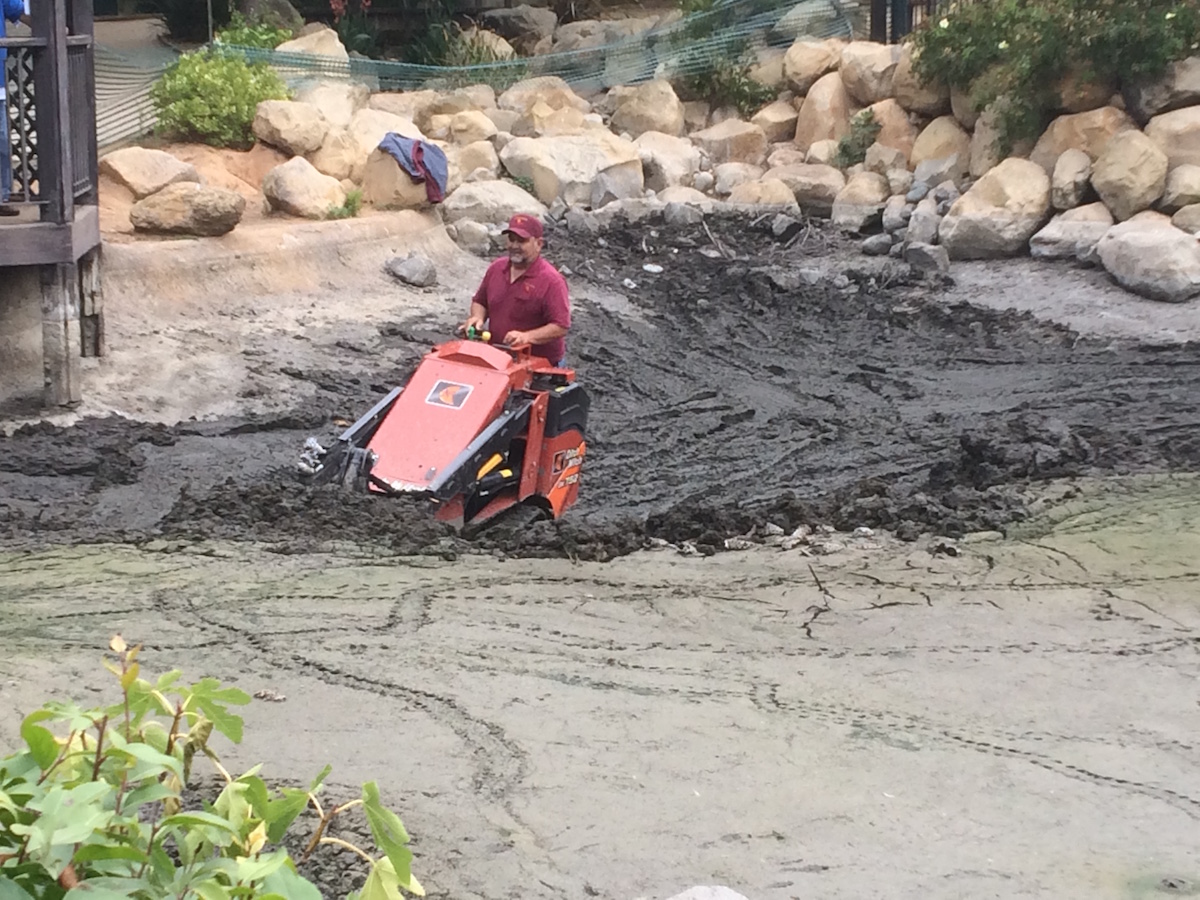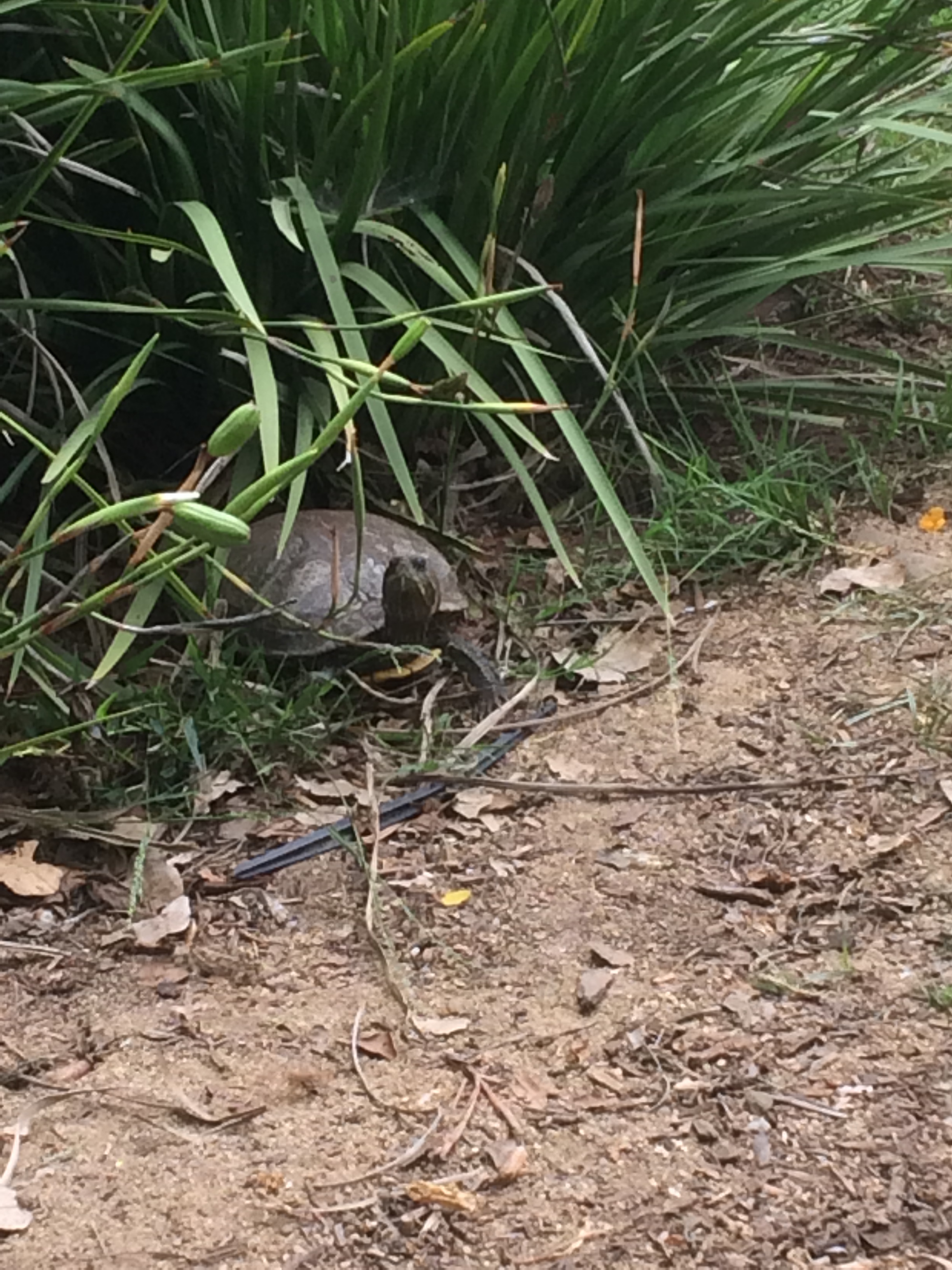Work at Turtle Pond Reaches Bottom
Unexpected Quantity of Sludge Encountered
Turtles dug themselves deep into the mud while pumps whirred and drained a mucky slurry from the pond at Alice Keck Park Memorial Gardens. Spencer Frasher, who’s been working at the pond almost daily, said he was relieved they’d found their oldest turtle, buried in the deepest part of the pond. The City of Santa Barbara’s park workers hadn’t reached its hiding spot until after two light-weight mini-diggers had spent a week moving 800 pounds of muck per scoop to a big skip loader waiting at the pond’s edge. Nearly 40 years of sludge had accumulated five feet or deeper in the center, hidden when the pond margins were exposed and cleaned about a decade ago.

The big turtle was likely a descendant of the originals brought to populate the pond when it was finished in 1979. It’s been joined by almost 100 red-eared sliders, “dropped off” by residents. Another unwanted donation to the pond was a goldfish that grew to be as fat as it was long: “It’s t h i s b i g !” said parks superintendent Ken Brown, holding his hands apart almost shoulder-width in the classic fisherman’s pose. That fish, however, its koi cousins, and the turtles were moved to Chase Palm Park for the duration of the pond cleanup.
Watching his crew toil in the squishy mud, Brown commented that some of the murk was composed of crackers, bread, cereal, and other human foodstuff tossed into the pond by people. “Sure, it’s fun, especially for children, to feed the birds, turtles, and koi, but it is quite unhealthy for the animals, and the pond ecosystem,” he said.

The pond design didn’t accommodate the additional feeding, Brown continued. “It contributes toward an imbalance in plant and animal populations while creating a dependency for the wildlife. Even if it was properly formulated animal feed, the sheer volume is too much for the animals.” The unintended consequence, he said, “is a strain on the pond to process the waste and provide a suitable habitat.” Deep, cool water was part of the original habitat plan. Among the ideas to avoid a future buildup are signs to discourage feeding the animals.
“If we can reduce the amount of food, we will be able to better manage the water quality, and avoid the need to tackle such a large project in the future,” Brown said. Parks workers hoped the city would implement a sludge-removal program every few years, using a tightly screened pump, to help keep the pond clean.
Yesterday, parks employees and a city contractor finally reached the bottom of the pond. Brown estimates the work will be finished and the pond refilled by July 6.



